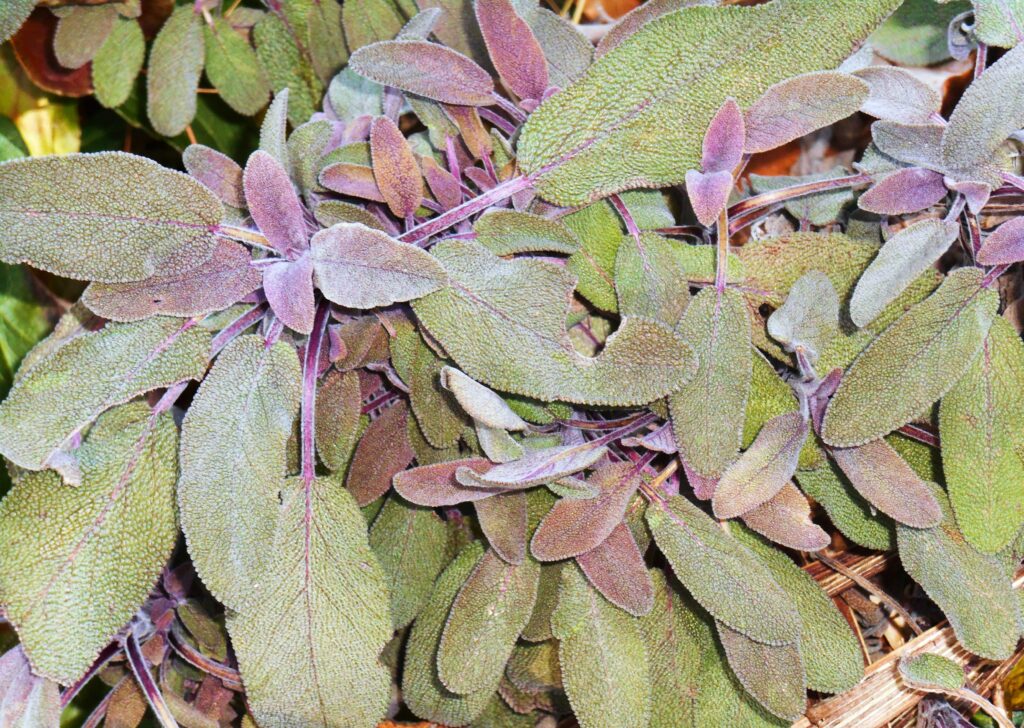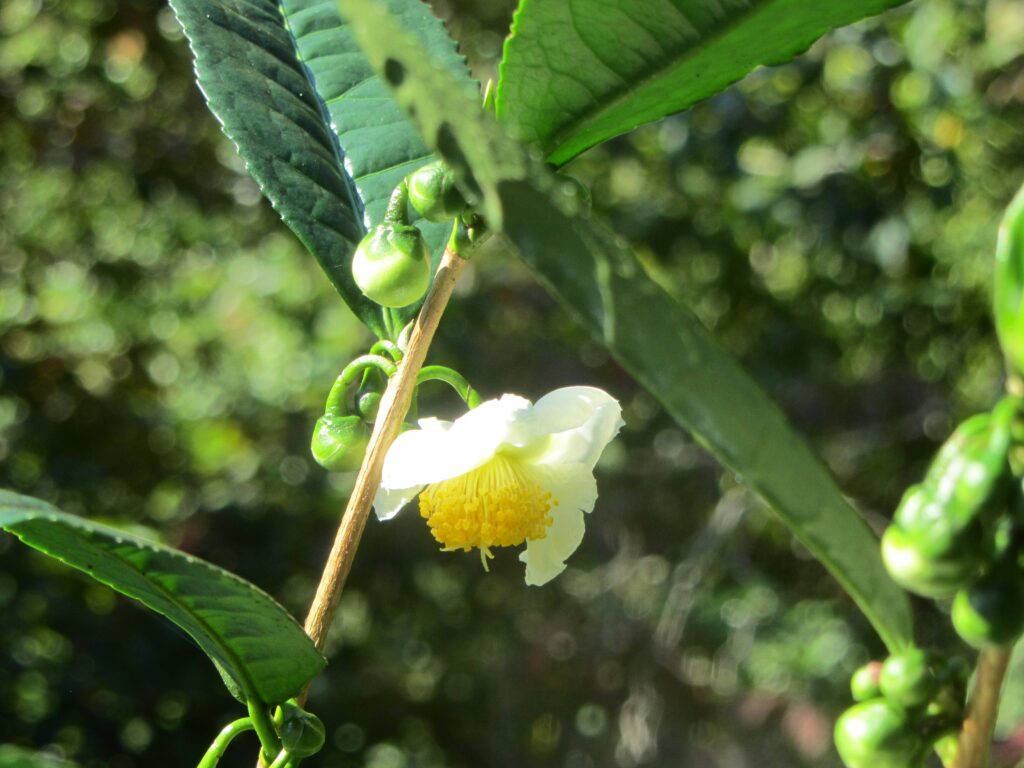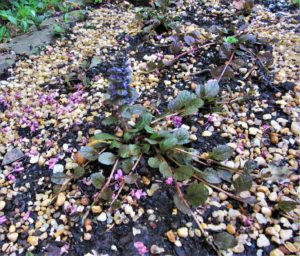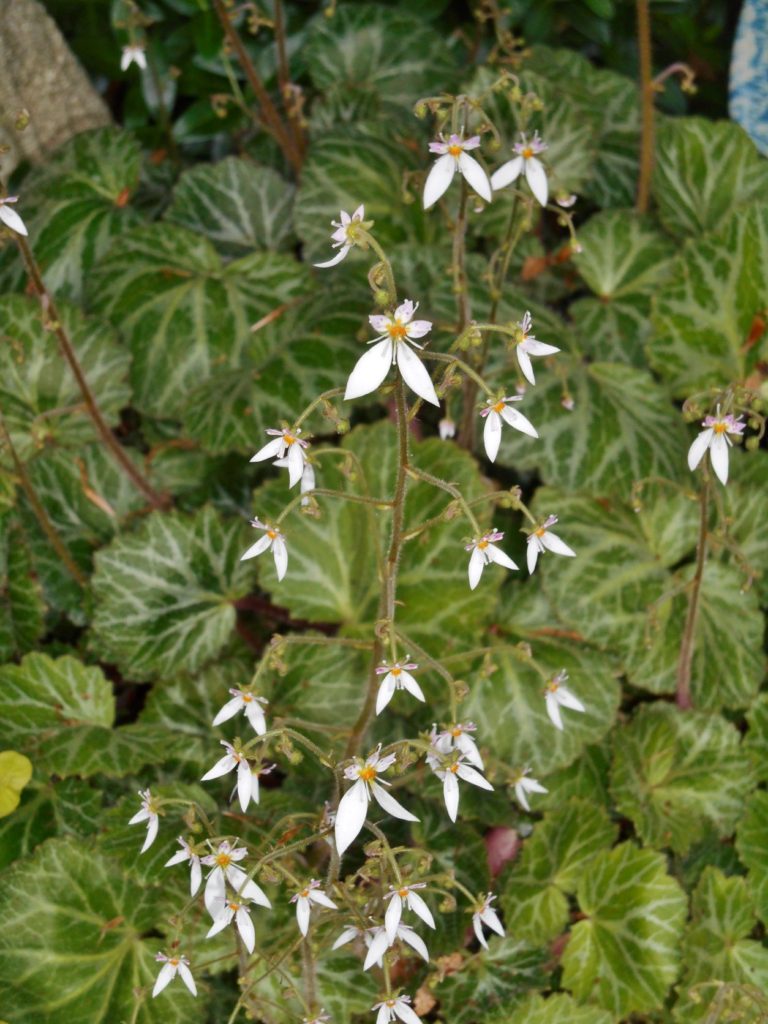Unlocking the Secrets of Plant Species Names

Salvia officinalis ‘Purpurascens,‘ culinary sage, is an evergreen shrub which holds its leaves through winter.
A plant’s botanical name, which consists of its genus and species name, may at first look unfamiliar and daunting to pronounce or to understand. These names are Latinized and so follow the rules of Latin language. They are intended to describe and give important information about the plants they name. Botanical names help botanists, horticulturalists, gardeners, and those breeding and selling plants to communicate precisely about specific plants, their varieties, cultivars, and hybrids. Every plant, historic or newly discovered, has its own specific name. These names may change from time to time, however, as we learn more about each plant and its genetic fingerprint and relationship to other known plants.
While a genus can include hundreds of species, a particular species name may be applied to any number of plants across many different genera. The species name is a descriptor that describes an important attribute about the plant. The species name may tell how a plant grows, the color of its flowers or leaves, or whether it is evergreen or deciduous. It may tell us something about a plant’s history; where on the planet it was first discovered and where it is considered native. Sometimes the species name honors the person who discovered it, or someone that they admire. Some species names are based on actual Latin words- usually adjectives used to describe the plant. But proper names in other languages may be ‘Latinized’ with the addition of certain suffixes to transform a name into a properly formatted species name.
Once we understand that species names are descriptors, providing us with important information, we can begin to build our own vocabulary of species names that we recognize and understand. We will discover that these names fall into related groups, frequently sharing certain syllables or root words which carry the meaning.
The genus name, which designates a group of plants that share things in common within a plant family, has a gender: male, female, or neuter. The species name must follow the Latin spelling convention to agree in gender with the genus name. Those who learned Latin, or related ‘romance languages’ like French or Spanish, understand the idea that each noun has a gender and requires other words used with it to agree with its gender. This is something we don’t have in English language, and so it requires experience and practice to feel comfortable with these conventions.
For example, ‘albus’ a Latin term for ‘white.’ It is the male form of the word to be used to describe a ‘male’ gendered noun. ‘alba’ is the female form, and ‘album’ the neuter (neither male nor female) form. Any of these terms, used in a species name like Lonicera albiflora, indicates some part of the plant is white. In this case, a honeysuckle, native in southern parts of the United States, which has white flowers.
Baptisia alba, a native indigo, has white flowers. Salix alba, the white willow, has a silvery, whitish underside on its leaves. Salix nigra, the black willow, native in our area, is named for its dark brown or black bark. Quercus alba is the white oak, and Populus alba the white poplar. Viscum album is the white fruited European mistletoe, while Symphoricarpos albus is a North American native shrub with white flowers and white fruits.
Gardeners, and other folks who love plants, may find it useful and interesting to learn some of these words so frequently used as species names for specific plants. It can help in selecting plants to use in a garden, and it can help us know what to expect from a plant as it grows to maturity. It can also help us to recognize native North American plant species and those that originate on another continent.
Learn more about plant names in the University of Chicago Press book by James Armitage, A Portable Latin for Gardeners: More than 1500 Essential Plant Names and the Secrets They Contain. This book is available as a digital book, as well as in hard copy, and offers pronunciation guides as well as explanations of common plant names.

Camellia sinensis, a Chinese species, blooms in late September and October. This is the Camellia whose leaves are dried to make tea.
Here are a few of the many names included in this resource:
Alpinus, alpina, alpinum, alpicola: native to rocky regions, high altitude, as in Ribes alpinum
Americanus, americana, americanum: from North or South America, as in Agave americana
Arborescens, arboreus, arborea, arboreum: A woody plant, like a tree, as in Amelanchier arborea
Arboricola: Lives on trees, as in Heptapleurum arboricola
Argentatus, argentata, argenteum, argenteus: Silver in color, as in Salvia argentea
Bicolor, discolor: Having two colors, as in Caladium bicolor
Borealis, boreale: from the north, as in Polemonium boreale
Canadensis, canadense: Having to do with, or from Canada or northern North America, as in Cercis canadensis
Cardinalis, cardinale: bright scarlet red, as in Lobelia cardinali
Cerealis, cereale: relating to agriculture, likely edible, as in Secale cereale
Cinnamomeus, cinnamomea, cinnamomeum: cinnamon brown, as in Osmunda cinnamomea
Citrinus, citrina, citrinum: Lemon yellow, or like citrus, as in Melaleuca citrina
Coccineus, coccinea, coccineum: Bright scarlet red, as in Quercus coccinea
Cyananthus, cyanantha, cyananthum, cyaneus, cyanea, cyaneum: Blue, as in Penstemom cyananthus
Febrifugus, febrifuga, febrifugum: Something that can reduce fever, as in Psorospermum febrifugum
Flavens, flaveolus, flaveolum, flavescens, flavidus, flavida, flavidum, flavovirens, flavus, flava: Various kinds of yellow, as in Aesculus flava
Frutescens, fruticans, fruticosus, fruticosa, fruticosum: bushy or shrubby, as in Chrysojasminum fruticans
Glaucus, glauca, glaucum: Has a ‘bloom’ on the leaves, as in Canna glauca
Inebrians: can intoxicate, as in Lagochilus inebrians
Japonicus, Japonica, nipponicus, nipponica, nipponicum: from, or having to do with Japan, as in Camellia japonica
Montanus, montana, montanum, montensis, montense, monticola: growing on mountains or mountainous regions, as in Clematis montana
Niger, nigra, nigrum, nigrescens, nigricans: black or dark brown, or turning black, as in Salix nigra
Occidentalis, occidentale: relating to or from the Western hemisphere Platanus occidentalis
Palmatus, palmata, palmatum: shaped like a palm leaf, as in Acer palmatum
Officinalis, officinale, officinarum: a useful plant often sold in stores or markets, as in Salvia officinalis
Orientalis, orientale: from, or relating to the Eastern hemisphere, as in Helleborus orientalis
Purpurascens, purpuratus, purpureus: Purple or becoming purple, as in Asclepias purpurascens

Ajuga reptans sends out stolons to spread new plants around the mother plant. Like a strawberry, the new plantlets at the end of each stolon root and grow into a new plant which will soon send out stolons of its own. This is an efficient ground cover which holds the soil against erosion.
Reptans, repens: has a creeping habit, as in Ajuga reptans
Rubens, rubra, rubrum: Red, as in Acer rubrum
Sativus, sativa, sativum: a cultivated, useful plant as in Crocus sativus
Semperflorens: blooms over a long season as in Begonia Semperflorens
Sempervirens: evergreen, as in Buxus sempervirens
Sinensis, senense: from China, as in Camellia sinensis
Socialis, sociale: colony forming as in Ledebouria socialis
Somniferus, somnifera, somniferum: will induce sleep, may be hallucinogenic, as in Papaver somniferum
Stoloniferus, stolonifera, stoloniferum: has runners that take root, as in Saxifraga stolonifera
Striatus, striata, striatum: Has stripes, as in Bletilla striata
Sylvaticus, sylvatica, sylvaticum, sylvester, sylvestris, sylvestre, sylvicola: growing in or related to forests and woodlands, as in: Fagus sylvatica
Tectorum: lives on the roof, as in Iris tectorum
Toxicarius, toxicaria, toxicarium: poisonous, as in Rhus toxicarium
Variegatus, variegata, variegatum: variegated, having several colors mixed in a pattern on a leaf or petal, as in Codiaeum variegatum
Venenosus, venenosa, venenosum: poisonous, as in Sauromatum venosum
Versicolor: with various colors, as in Iris versicolor
Virens, virescens, viridescens, viridis, viridiflorus, viridiflora, viridiflorum, viridulus, viridula, viridulum: green, turning green, having green flowers, etc. As in Santolina virens
Vulgaris, vulgare, vulgatus, vulgate, vulgatum: Common, easy to find, as in Artemisia vulgaris
Zebrinus, zebrina, zebrinum: striped, as in Tradescantia zebrina

Saxifraga stolonifera, strawberry Begonia, grows as an evergreen ground cover which blooms in April and May.
Resources:
Armitage, James. A Portable Latin for Gardeners: More Than 1500 Essential Plant names and the Secrets They Contain. The University of Chicago Press. 2016.
Bayton, Ross.
Harrison, Lorraine.
Back to the Plant Literacy Main Page
Photos by E. L. McCoy



